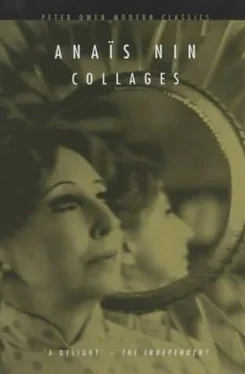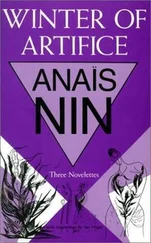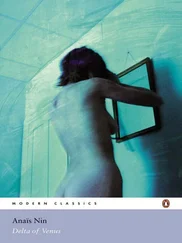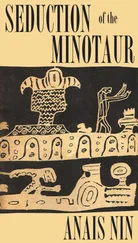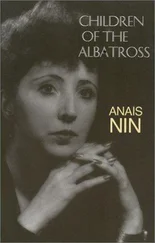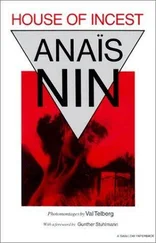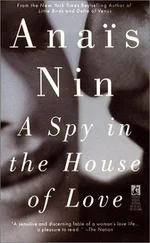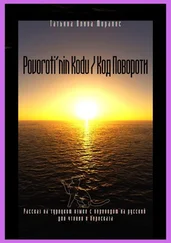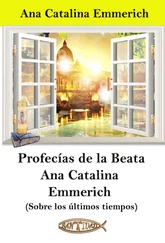“What is going on tonight that we don’t have to get on a jet to see?”
“I will take you to see Tinguely’s Machine that Destroys Itself.”
“I thought only dreamers destroyed themselves.”
As they hailed a taxi she raised her head and watched a plane flying above them leaving a trail of smoke which took the shape of words: SEE THE GREATEST STORY EVER TOLD.
The courtyard of the Museum of Modern Art in New York; a winter night; the snow had already fallen; a blue mist came up from the pavement as if it were breathing.
In the courtyard of the museum stood a floodlighted pile of objects one could not at first identify, a pile of objects such as one might find in a junkyard: an old piano, a broken bicycle, a child’s carriage with only three wheels, a broken ladder with only half its rungs, punctured tires, soap boxes, old bottles, odd pieces of machinery like those of an automobile cemetery.
The entire pile was painted chalk white; it looked like a mound of debris covered by snow. Hung on the scaffolding were large bottles of colored chemicals. A giant roll of paper hung ready to unroll, like a newspaper going through a printing press. A giant brush hung poised over it to write on it as on a ticker tape.
The entire structure was wired and several men were still testing the connections which would set it in motion. A huge balloon topped the edifice, and a torn umbrella opened over a fire extinguisher.
The public began to wander in, to stumble over the TV wires, to be blinded by flash bulbs.
In the icicle blue night the floodlights looked orange. Smoke came from everyone’s mouths as they talked.
There was a tussle between a museum guard and a camera man who had climbed on one of the valuable statues and rested his camera bag on a valuable naked arm. Faces were violently lighted, cameras whirred, the wired structure seemed about to totter, the snow melted.
The fire chief in his uniform looked solemn and concerned.
Tinguely himself was smiling and calm. When he had dragged his machines through the streets of Paris for an exhibition, had he not been arrested as the suspected designer of a new kind of destructive, death dealing instrument?
There was a rumble as of an advancing earthquake. Clattering, steaming, hiccoughing, vibrating, puffing, hissing, juggling, dislocating, trembling, the entire structure went into a spasm which opened the bottles of chemicals, and they exploded into colored smoke which filled the balloon with air, set the roll of paper unrolling and the brush painting erratically the names of the artists like stock market quotations. But before the list was finished, the roll of paper rolled backwards, perversely, and swallowed the names in desperate inversion.
The child’s carriage detached itself from the mass of shaking, sputtering, burning structure, as if it wished to escape destruction. It rolled towards one of the spectators as if looking for a child in the audience. It carried a drum which played automatically. And then it returned, as if hypnotized by electronic umbilical cords, resigned to its fate, unable to escape. It made one more sortie towards the spectator, one more appeal from its drum, an appeal for life, and inevitably rolled back into the pyre.
The piano started to burn slowly, and as it burned the notes played wistfully, out of tune, unreal, like a pianola. The flames consumed the wood but not the notes and not the wires. The notes played like the cry of trapped music, hollow, expiring.
The whole structure rattled erratically, in counter-rhythms, steaming senselessly, all motions in reverse, each interfering with another, negating it, inverted activity, bending and twisting and tearing at itself, introverted activity ending sometimes in a deadlock so that the fire was allowed to spread more quickly. The ladder trembled, lost a few rungs, fell. The balloon at the very tip of the structure, a huge orange balloon, gasped and burst. The chemicals smoked green, orange and blue.
The paper with the names of artists unrolled again, a few more names were added, and then it swallowed them all again, finally catching fire.
It seemed at times like an infernal factory in which every operation had gone mad, in which the levers and buttons did the opposite of what they were designed to do, all the mechanisms reversed.
The fire devoured one more note of the piano, and only three notes were left playing. Then two. Then one which would not die.
The fire chief stood by, preoccupied, wondering at which moment the suicide of the machine would become an attempt to overthrow the government.
Smoke and winter’s breath met in mid-air. The snow melted at the edges, but the white paint did not.
The piano played the last will and testament of a dying piano. The public pressed closer to hear its last melody. The fire chief picked up the fire extinguisher.
At this point the artist protested against the interrupted climax. The public hissed the fire chief. The artist said everything was under control, but the fire chief did not believe him. He began to extinguish the fire.
One more explosion of an orange chemical, one more balloon bursting, one more umbrella closing mournfully, one more piece of wood falling to the ground, one more tire rolling out of the pulsing machine, epilepsy of tin, turmoil, one more gasp, one more twist of metal, one more hiccough.
The fire chief interfered with the drama. He retarded the process. If the ladder had not burned he would have climbed on it to rescue the piano, the baby carriage. Suicide is illegal.
The skeleton of the mischievous dinosaur of the dump heap did not collapse; its suicide was about to fail. The artist gave a quick, discreet kick to the last supporting beam and then it collapsed, and the public moved closer to the smoking remains, picking up fragments for souvenirs, dismantling.
What the photographers caught was the kick.
THE CROWD DISPERSED. THE NEWSPAPERMEN went off to write their copy. Each person carried a piece of the white debris. Doctor Mann had rescued the roll of paper with the signatures of artists which had not burned. The name of Judith Sands was among them. As they stood in the corner hailing a taxi Renate and Bruce came out of the revolving door. Renate recognized Doctor Mann. When Doctor Mann introduced Judith Sands, Renate flung her arms around her.
“I love your book so much I have worn it down with readings; it looks like a pack of cards worn out by a gypsy fortune teller.”
“We wanted to rescue the piano,” said Renate. “I felt it still had a song in it. I didn’t want to rescue anything dead.”
“Let’s sit somewhere and have a drink, and read the roll of artists’ names.”
Judith Sands said in a slightly rough voice: “Come back to my place. I have something to show you.”
They followed her. In the dimly lit apartment they could only see paintings on the walls and many books. The only light came from a desk lamp. Judith Sands without taking her cape off, went to the couch, nudged two cats off who had been sleeping on it, got on her knees, pulled out a carton overflowing with papers, pulled out a bunch which had been clipped together and gave it to Renate to read.
It began:
“Vienna was the city of statues. They were as numerous as the people who walked the streets. They stood on the tip of the highest towers, lay down on stone tombs, sat on horseback, kneeled, prayed, fought animals and wars, danced, drank wine and read books made of stone…”
